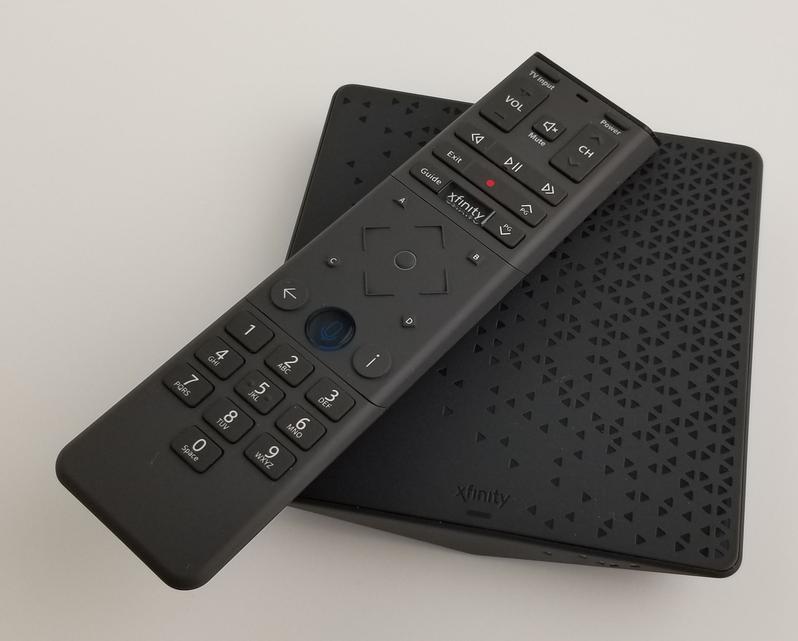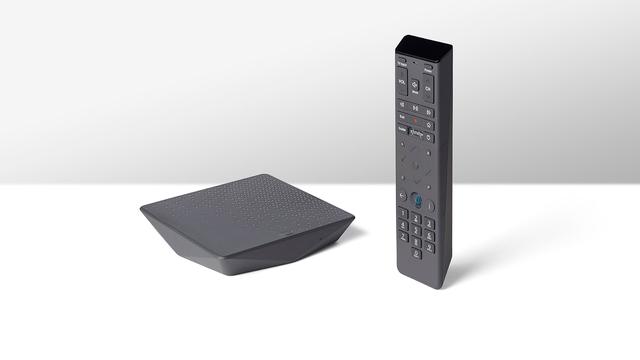
Comcast Just Launched A $350 TV — And Isn’t Stopping There
Zach Braff Talks Being a Tattooed Chef Dad in ‘Cheaper By The Dozen’ and His Hopes For a ‘Scrubs’ Movie
'The Walking Dead': Josh Hamilton Teases Lance Is Just Getting Started
Samuel L. Jackson Discusses His Personal Connection to 'The Last Days of Ptolemy Grey'
Sebastian Stan Opens Up About the 'Pam & Tommy' Finale
With the launch of the XClass TV in the U.S. and Sky Glass TV in the U.K., Comcast stuck its toe in the nearly $200 billion global smart-TV market in 2021. What will the broadband and cable provider, Hollywood studio, global streamer, and emerging device maker do for an encore in 2022?
Well, more. Likely a lot more.
In October, Comcast unveiled its 50-inch ($348) and 43-inch ($298) Hisense 4K UHD XClass TVs that run a version of the same user interface that is already installed on millions of Comcast’s Xfinity X1, Xfinity Flex, and Sky Glass devices. XClass TV runs all of the major streamers, does not require that you live in a Comcast market, and includes a free year Peacock’s premium tier.
In 2022, Comcast plans to sell more TVs, with more features, from more manufacturers, at more price points, in more global markets, and at more retailers. Sky Glass will expand from the U.K. to Sky’s other European markets, and XClass TV will expand its U.S. offering from two entry-level Hisense displays sold exclusively through Walmart to higher-end displays and broad retail availability.
“We intend to work with more partners on the manufacturing side and more on the distribution side with no exclusivity,” Comcast’s XClass TV chief Andrew Olson told Decider.
Comcast’s Sky Glass in the U.K., which Olson helped develop, likely offers some clues where the XClass TV is headed in the U.S. On its website and in its announcement video, Sky Glass likens itself to a smartphone — a high-end device, built for content, that you can buy for zero-interest monthly payments.
Olson sat down with Decider to talk about the XClass TV’s design and what’s in store for 2022.
DECIDER: TV platforms all have a Netflix app, they all play 4K video, they have have voice remotes, etc. What’s the major sell for XClass TV?
ANDREW OLSON: We’ve spent decades thinking about how to get tens of millions of people to like watching TV. Over the last few years in particular there has been an evolution toward apps, and apps are hard for consumers to navigate. The biggest thing we bring to the table is an ability to help customers navigate that world of apps.
I set up an XClass TV demo unit a few weeks ago, and it was the smoothest, fastest onboarding I’ve ever experienced with a TV. How did you navigate designing and testing that process?
When we talk internally about product, we try to frame those discussions in terms of “the consumer wants…,” “the consumer likes…” instead of what we want as designers. We asked customers a lot of questions about how they use their TV, and we tried to keep stuff they like and get rid of stuff they don’t like.
We do test a lot by putting consumers in rooms and watching them navigate a device, but that’s after we look at what seems to work and seems not to work and building a hypothesis of a smooth onboarding process.
I’m a big fan of Richard Thaler and Cass Sunstein’s book Nudge, which is about putting the right choices in front of consumers. When you design the flow chart for how to set up an XClass TV or how to rent a movie, are you focusing mainly on how few clicks it should take?
I love Nudge. I love Thinking Fast and Slow by Daniel Kahneman. When people sit down on the couch to watch TV, they don’t want to think that hard about it. Our job is to make it as easy as possible for them to get to the content they love so they can sit back and enjoy it.
Sometimes that’s the fewest clicks, and sometimes it’s a few more clicks with easy decisions. The important thing is to design for the 80%-90% use case for what consumers want to do and less for the 10%-20% edge cases.
I see that especially in XClass TV’s settings. If you’re defaulting me to the highest video resolution that a streamer offers, I don’t need a bunch of extra video settings.
Customers do three things on their TVs: they find things, they watch things, and they resume things. We’re trying to stay out of the way as much as possible on everything else.
Talking about resuming content, the top row of the interface shows the current episode for some streamers but it doesn’t for others. Is that a work in progress?
It is. That top bar, which we call Launchpad, shows the most recent things you’ve been watching. It’s like a browser history, and it’s one of Xfinity X1’s most popular features. Because XClass is a TV, there’s a bit more to it. We have inputs, antenna channels, etc., in that Launchpad row.
With apps we have different rules to follow depending on the app, and that will continue to evolve as we work with our content partners and as we learn more about what customers like and don’t like.

How much will the XClass TV adapt to what I watch? If I rent a lot of movies, will movie rentals become more prominent? If I watch a lot of Pluto TV, will I see those channels higher up in the live interface?
The interface will get more dynamic over time – both in terms of what we’re doing with it and how learns about what and how you watch. We want make sure we’re helping customers watch what they want to watch but without making it difficult to do new things. It’s a fine balance, and it will continue to evolve.
How much are you thinking about XClass TV as part of a smart home?
The XClass platform is open enough for device companies to write smart-home applications that will run on the TV. We’re also working with partners to expose those functions more deeply in the interface where we think that makes sense for customers. We want to balance all of that with the simplicity of a TV that you don’t have to think too hard about sitting down to watch.
I did not set up an antenna on the XClass TV demo unit that I’ve been using. How does an antenna integrate into the interface?
The antenna channels integrate nicely into the Launchpad row, and you can toggle back and forth between live channels fairly easily that way. You’ll also see the channel guide for those live broadcast channels.
What other apps are streaming in 4K?
So far, Netflix, HBO Max, Disney+, Prime Video and Vudu. Hisense makes a fantastic 4K display, so we want more of the services that are available on the app to make those services available in 4K video. We’re also adding Dolby Atmos audio capability to more services as we go.
Apple TV is one of the few streamer apps that’s not available, and it’s announced. When it that coming?
We’re working on it now. That should roll out in the first quarter of 2022.
What about Starz?
That should also launch in the first quarter of 2022. You can also subscribe to Starz on Hulu, Sling TV or YouTube TV, which are all currently available on XClass TV.
Peacock is included free for a year. That does not require you to be a Comcast broadband or cable subscriber?
Right. If you purchase an XClass TV and you’re not a Comcast customer at all, you’ll get Peacock free for the first year.
XClass TV, Xfinity X1, Xfinity Flex, and Sky Glass are all versions of the same platform. Has that expedited getting streamers onto XClass TV?
It definitely has. This has been the fastest product launch in Comcast’s history because we started with everything already in one place on our global technology platform. One thing that has really helped with the launch is that apps on XClass are not actually installed on the device. When you launch the Bravo app, it launches on the device without an app install.
That’s interesting. I assumed the lack of a designated app store on XClass TV was a design choice — that you were hiding some of those gears within the interface — but you don’t actually need a workflow for downloading apps.
There are still “apps,” but they load dynamically from the cloud. We did a lot of work back during the design of Xfinity X1 to run those operations from the cloud, and we’re working with our content partners now to run their apps across X1, Flex, XClass, and Sky Glass — 40 million devices — from the cloud.
When will XClass TV have apps for Comcast, Charter, Cox, etc., cable subscribers to be able to use the their cable service without a set-top box?
We’re working on several of those apps now with plans to start launching in early 2022. XClass TV is a national platform, and we want it to be an easy user experience for people who have cable subscriptions. We already have YouTube TV, Sling TV and Hulu with Live TV on the platform.
For consumers who live in Comcast markets and have Xfinity broadband or cable service, will you make a subscription package available specifically for XClass TV users?
Just like with our Flex box for Xfinity subscribers, you’ll be able to subscribe to Xfinity video service if you live in an Xfinity market. We don’t have plans to launch a separate XClass TV content package.
XClass TV launched on two Hisense’s fairly entry-level LED devices. Will you launch at some point on some higher-end OLED devices?
We don’t have anything to announce at the moment, but we started at a mass-market price point and Hisense makes a very sophisticated device at that price point. The operating system is built to operate on very high-end devices. We can go to bigger displays and different kinds of displays with more powerful audio. We’re going to work with partners to address different parts of the market.
When you say “partners,” you mean Hisense and other TV manufacturers?
Correct, correct.
Does Comcast envision XClass distribution eventually becoming something like mobile-phone distribution where you get a new XClass TV when you set up your Xfinity or Charter service?
We’re definitely looking into that, but we don’t have anything to announce other than to say that your point is well-made.
It makes sense to you for consumers to pick up an XClass TV at the same place where they sign up for broadband or cable?
Yes, that’s something that certainly makes sense.
Scott Porch writes about the TV business for Decider. He is a contributing writer for The Daily Beast and produces the Must Watch streaming podcast. You can follow him on Twitter @ScottPorch.
}})